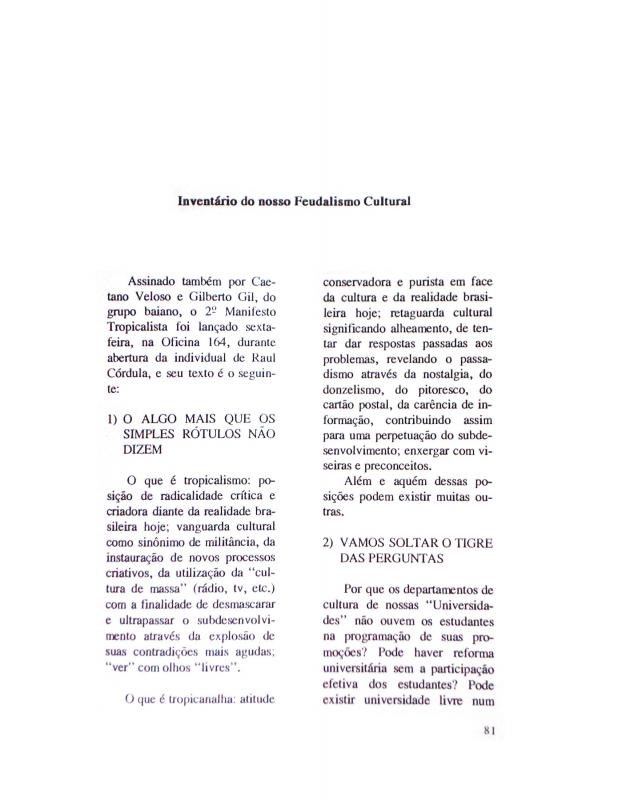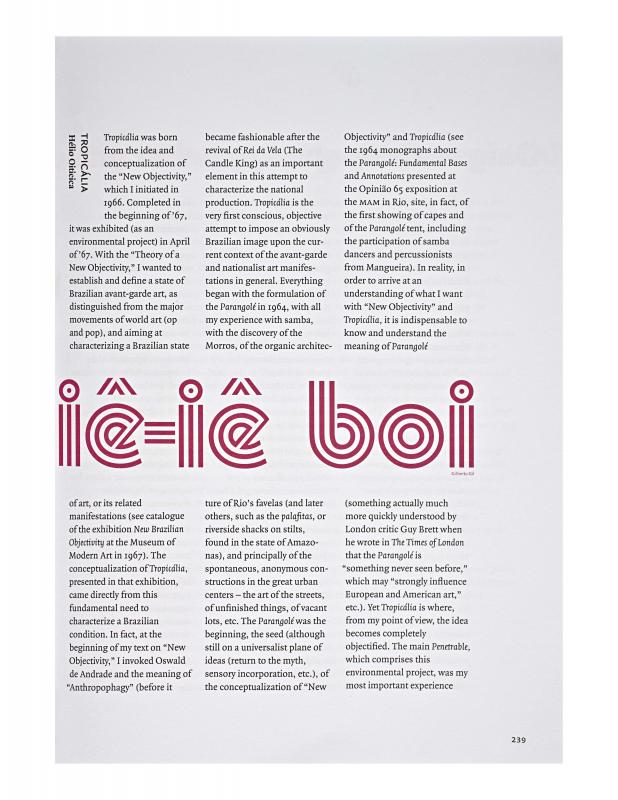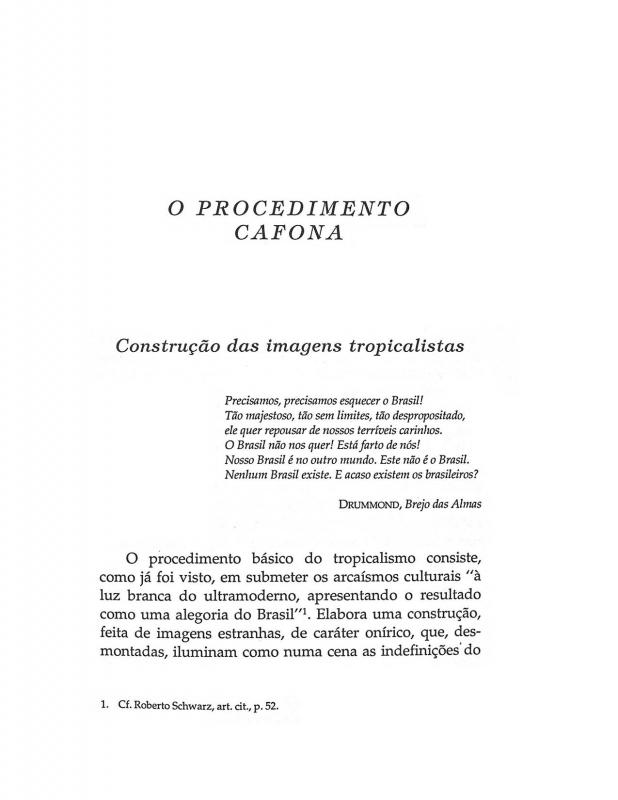In Pernambuco, the first publication of the “Manifesto tropicalista” was in Olinda (the old city next to Recife) at the exhibition by Marcos Silva, a member of a group of poets of the state of Rio Grande do Norte (April 19, 1968) that took place at the Varanda gallery. In support of the “Tropicalista” movement, the proclamation was almost simultaneously made public in Rio de Janeiro and in Bahia. Tropicália was the title of a work by Hélio Oiticica that was included in the exhibition Nova Objetividade Brasileira (April of 1967) at the MAM-RJ (Museu de Arte Moderna do Rio de Janeiro). The same title was used by the singer-songwriter Caetano Veloso for a famous song, and, then, for an album with a collection of popular Brazilian music or MPB (Música Popular Brasileira). The cultural movement known in Brazil as “Tropicalismo” or “Tropicália” revolved around these musical trends, and was also influenced by theatre, cinema and certain areas in the Visual Arts.
Jomard Muniz de Britto (b. 1937) is a poet and essayist who participated in various cinema projects and multimedia works. He was the one who articulated avant-garde poetry and “tropicalismo” poetics in the northeastern region of the country in the 1960s. Aristides Guimarães is a music composer of popular music. Celso Marconi is a journalist and film critic.
[For additional information, as a complementary text and background of the manifesto, see in the ICAA digital archive also by Jomard Muniz de Britto, “Inventário de nosso feudalismo cultural” (doc. no. 1111421), taken from his book Bordel brasileiro bordel (Recife: Comunicarte, 1992); the text by Hélio Oiticica on his work Tropicália (doc. no. 1074985); and the analysis of the songs relating to the Tropicália trend written by Celso Favaretto in “O procedimento cafona” (doc. no. 1110507)].



